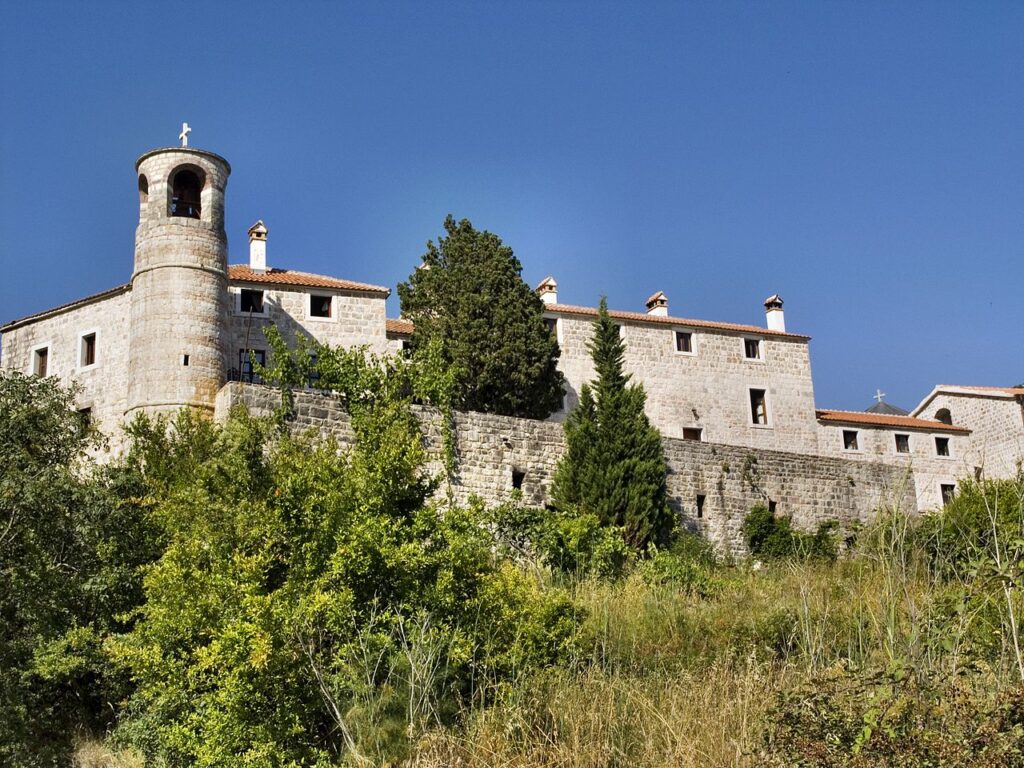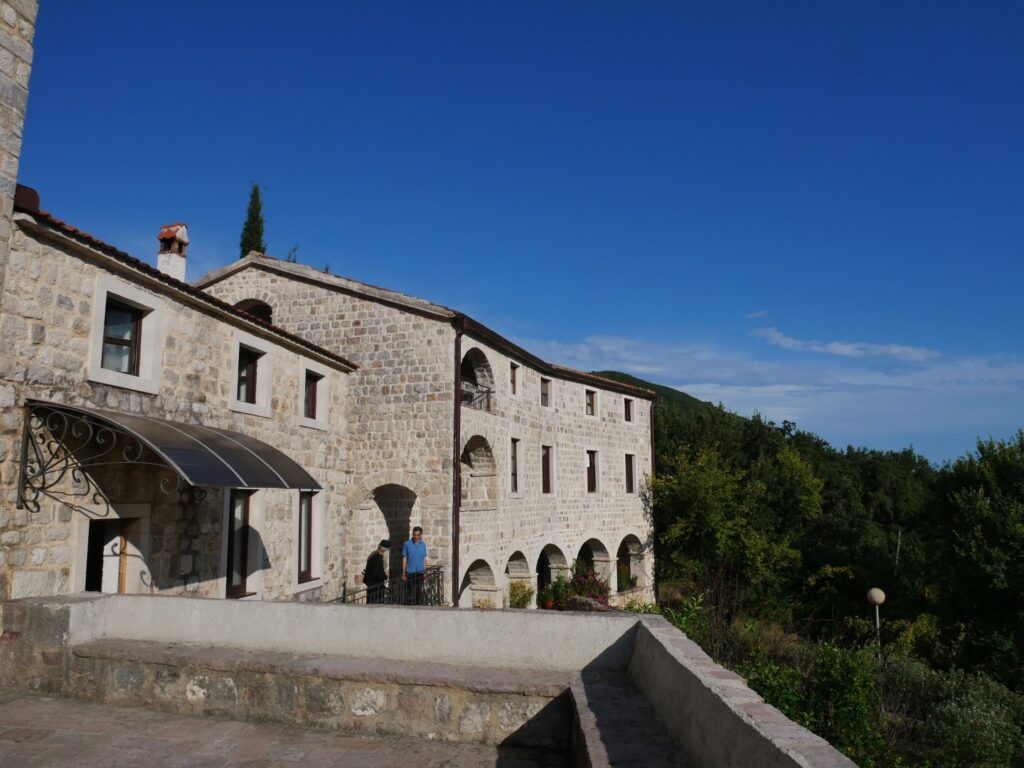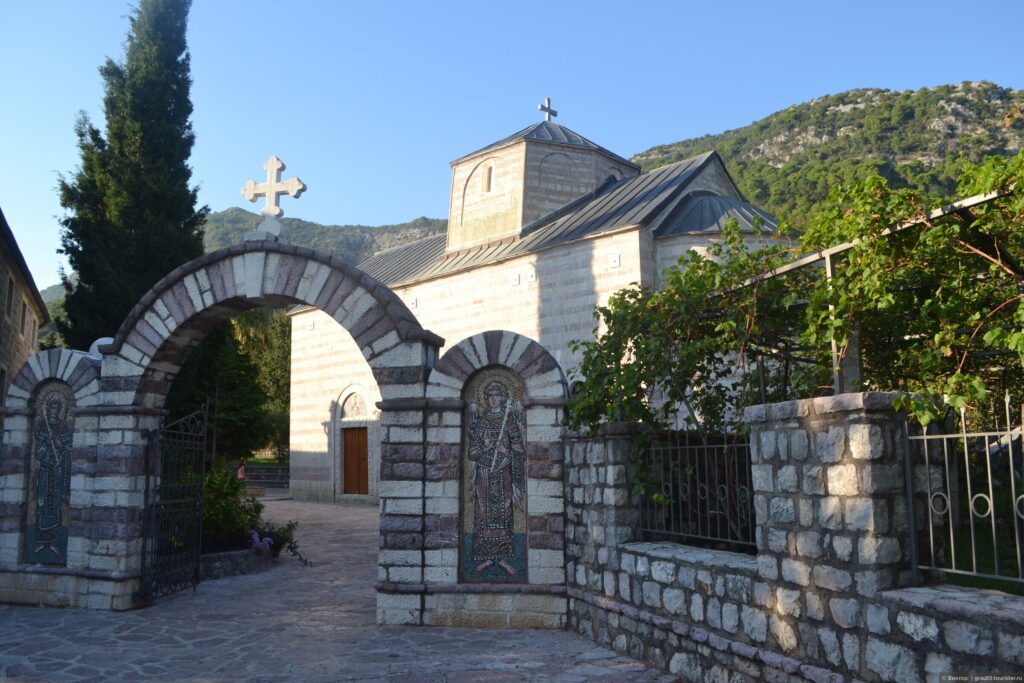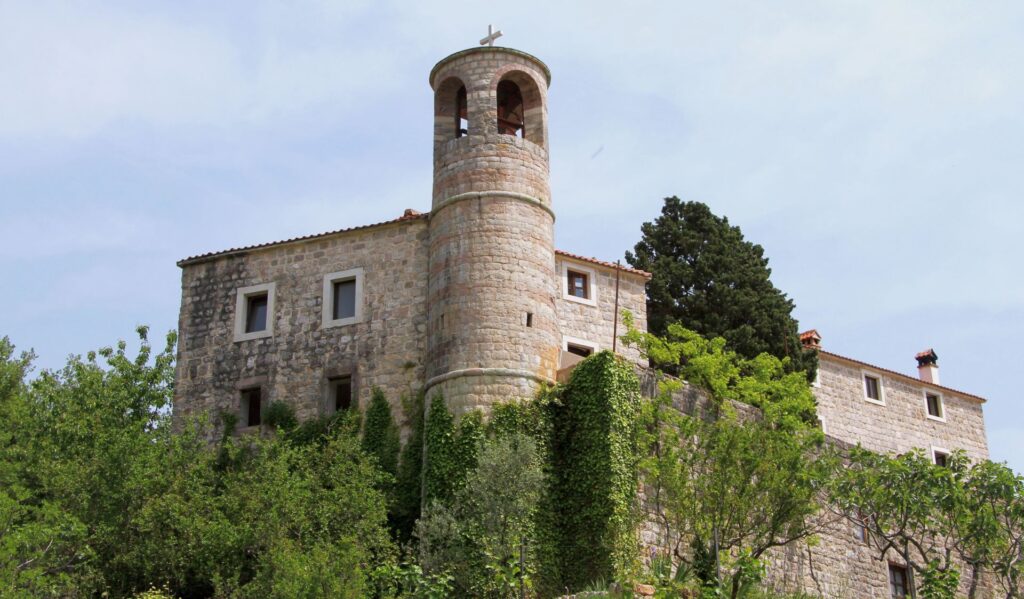Origins of Podmaine Monastery
Situated amidst the lush landscapes of Montenegro, the Podmaine Monastery is an emblem of historical richness and spiritual significance. Delving into its origins takes one on a journey through centuries, uncovering layers of stories, legends, and historical records. While concrete evidence of its inception is scant, it’s widely believed among historians and local elders that the monastery’s foundation can be traced back to the 15th century, during an era when the Byzantine spiritual influence permeated the region.
The very name, ‘Podmaine’, carries with it tales of the land and its people. In a direct translation, it alludes to a location “under the vineyard,” a poetic nod to the fertile landscapes that envelope the sacred precincts of the monastery. This place, with its serene ambiance, attracted early settlers and devout monks who sought solace and spiritual enlightenment. Over the years, Podmaine Monastery transformed from a modest spiritual retreat into an epicenter of faith, drawing in believers from far and wide.
The foundation stones of the monastery, laid with reverence and hope, have seen countless sunrises and sunsets. They’ve witnessed the changing political landscapes, the ebb and flow of wars, and the fervent prayers of generations. Within its walls, stories of divine miracles, tales of refuge during turbulent times, and chronicles of unwavering faith intertwine, making the monastery a rich tapestry of human history and spirituality.

Architectural Grandeur of Podmaine Monastery
As one approaches the Podmaine Monastery, its architectural splendor stands out, captivating the observer’s senses. This monumental structure is a harmonious amalgamation of Byzantine elegance and Montenegrin robustness. Every brick, every arch, and every dome narrates a story of the craftsmen’s dedication and the era’s artistic sensibilities.
The monastery’s walls, fortified yet graceful, protect an array of artistic treasures. Of particular note are the frescoes – magnificent wall paintings that adorn the interiors. These frescoes, rendered in a palette of earthy tones, depict scenes from religious scriptures, saints’ lives, and pivotal moments in Christian history. Each brushstroke is a testament to the artists’ skill and their profound connection with the divine.
Beyond the frescoes, the monastery houses a myriad of religious artifacts, manuscripts, and relics, each with its own tale of faith and devotion. The central nave, with its high ceiling and echoing acoustics, provides a serene space for prayers and contemplation. Here, amidst the soft glow of candles and the fragrance of burning incense, one can feel the weight of centuries and the presence of the divine.
The cloistered gardens and courtyards of Podmaine offer moments of reflection. Old trees, their branches swaying gently in the breeze, have stood as silent witnesses to the comings and goings of monks, pilgrims, and travelers. The Podmaine Monastery, with its grandeur and tranquility, stands not just as an architectural wonder but also as a beacon of faith, an eternal flame in Montenegro’s spiritual landscape.

Inside Podmaine Monastery
Stepping inside the Podmaine Monastery transports visitors to another world, where the weight of the present moment is balanced by the echoes of the past. The interiors are a testament to the rich spiritual and cultural history that the monastery has been a part of for centuries.
Immediately catching the eye are the meticulously preserved icons, relics, and manuscripts. These sacred items, some of which have been in the monastery since its inception, serve as a bridge between the physical world and the divine. They’ve been the focal point of countless prayers, blessings, and ceremonies. The icons, painted with an intensity of color and emotion, depict saints, apostles, and scenes from the life of Christ, resonating with spiritual significance.
But beyond the tangible artifacts, the atmosphere within the Podmaine Monastery is palpable. The air is thick with the aroma of incense, mingling with the subtle scent of aged wood and parchment. The silence, broken occasionally by the soft whispers of prayers or the distant chime of a bell, envelops visitors, offering a profound sense of peace.
Centuries of footfalls have worn down the stone floors, creating paths that guide visitors through the maze of corridors, chapels, and prayer rooms. Each corner of the monastery, from the grandest chapel to the most secluded nook, offers a space for reflection, connection, and reverence. It’s within these walls that generations have sought and found solace, guidance, and spiritual fulfillment.

Podmaine Monastery in Modern Times
The passage of time has done little to diminish the significance of the Podmaine Monastery. In fact, in today’s rapidly changing world, it has become a beacon of stability, history, and cultural significance. Modern times have seen the monastery evolve, not just as a center of religious activity, but also as a hub of cultural and educational exchange.
With the rise of global tourism, Podmaine Monastery has welcomed visitors from around the world. These travelers, drawn by tales of its architectural beauty and spiritual aura, come seeking a glimpse into Montenegro’s rich heritage. To cater to this influx, the monastery has incorporated modern amenities without compromising its historical integrity.
In addition to its role as a tourist attraction, the monastery plays a pivotal role in preserving Montenegrin culture and history. Regular workshops, seminars, and lectures are held within its precincts, focusing on topics ranging from ancient art techniques to the theological nuances of Eastern Orthodoxy.
Yet, amidst all these modern engagements, the core essence of the Podmaine Monastery remains unchanged. It stands as a testament to humanity’s perpetual quest for spiritual connection and enlightenment. In its chapels and courtyards, amidst the chatter of tourists and the solemnity of monks, the monastery continues its eternal dialogue with the divine, bridging the past with the present and paving a path to the future.

